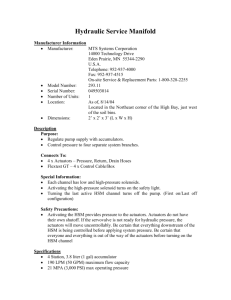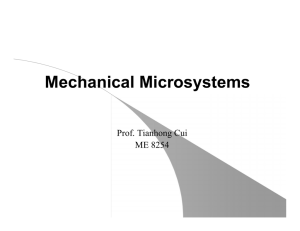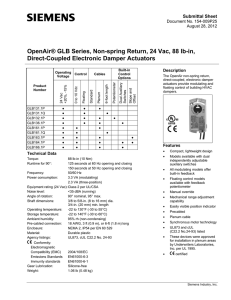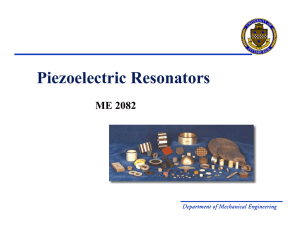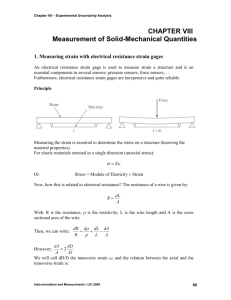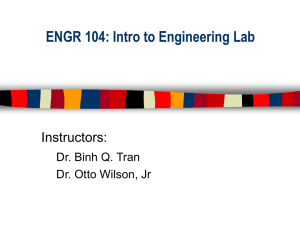in operando investigation of functional materials
advertisement
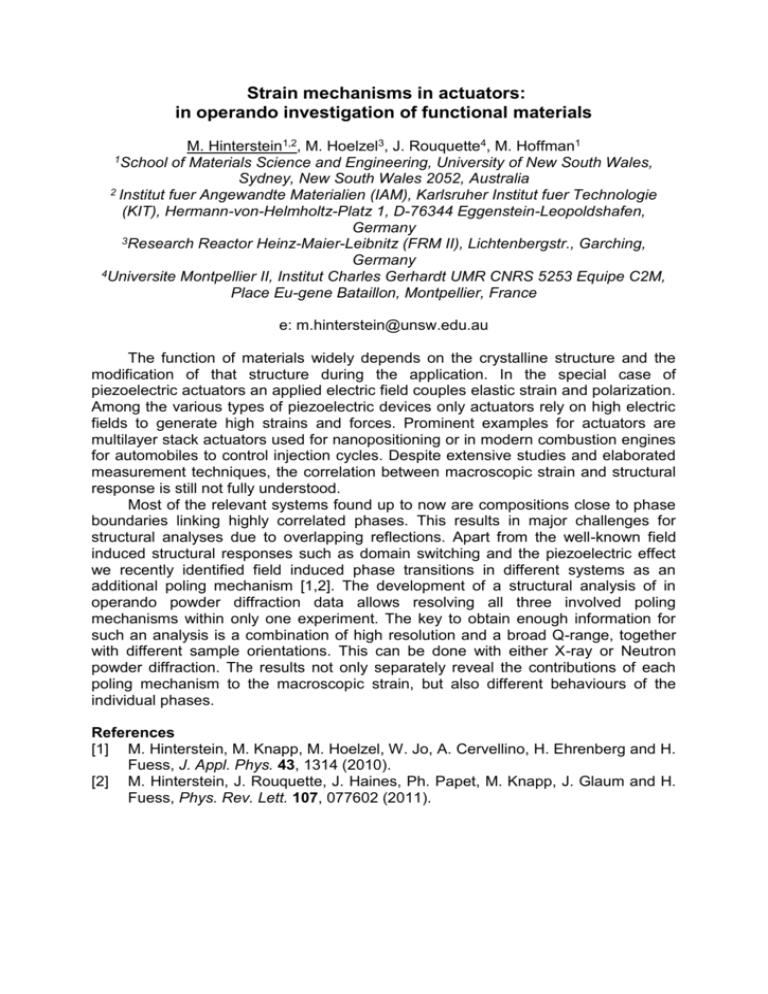
Strain mechanisms in actuators: in operando investigation of functional materials M. Hinterstein1,2, M. Hoelzel3, J. Rouquette4, M. Hoffman1 1School of Materials Science and Engineering, University of New South Wales, Sydney, New South Wales 2052, Australia 2 Institut fuer Angewandte Materialien (IAM), Karlsruher Institut fuer Technologie (KIT), Hermann-von-Helmholtz-Platz 1, D-76344 Eggenstein-Leopoldshafen, Germany 3Research Reactor Heinz-Maier-Leibnitz (FRM II), Lichtenbergstr., Garching, Germany 4Universite Montpellier II, Institut Charles Gerhardt UMR CNRS 5253 Equipe C2M, Place Eu-gene Bataillon, Montpellier, France e: m.hinterstein@unsw.edu.au The function of materials widely depends on the crystalline structure and the modification of that structure during the application. In the special case of piezoelectric actuators an applied electric field couples elastic strain and polarization. Among the various types of piezoelectric devices only actuators rely on high electric fields to generate high strains and forces. Prominent examples for actuators are multilayer stack actuators used for nanopositioning or in modern combustion engines for automobiles to control injection cycles. Despite extensive studies and elaborated measurement techniques, the correlation between macroscopic strain and structural response is still not fully understood. Most of the relevant systems found up to now are compositions close to phase boundaries linking highly correlated phases. This results in major challenges for structural analyses due to overlapping reflections. Apart from the well-known field induced structural responses such as domain switching and the piezoelectric effect we recently identified field induced phase transitions in different systems as an additional poling mechanism [1,2]. The development of a structural analysis of in operando powder diffraction data allows resolving all three involved poling mechanisms within only one experiment. The key to obtain enough information for such an analysis is a combination of high resolution and a broad Q-range, together with different sample orientations. This can be done with either X-ray or Neutron powder diffraction. The results not only separately reveal the contributions of each poling mechanism to the macroscopic strain, but also different behaviours of the individual phases. References [1] M. Hinterstein, M. Knapp, M. Hoelzel, W. Jo, A. Cervellino, H. Ehrenberg and H. Fuess, J. Appl. Phys. 43, 1314 (2010). [2] M. Hinterstein, J. Rouquette, J. Haines, Ph. Papet, M. Knapp, J. Glaum and H. Fuess, Phys. Rev. Lett. 107, 077602 (2011).
